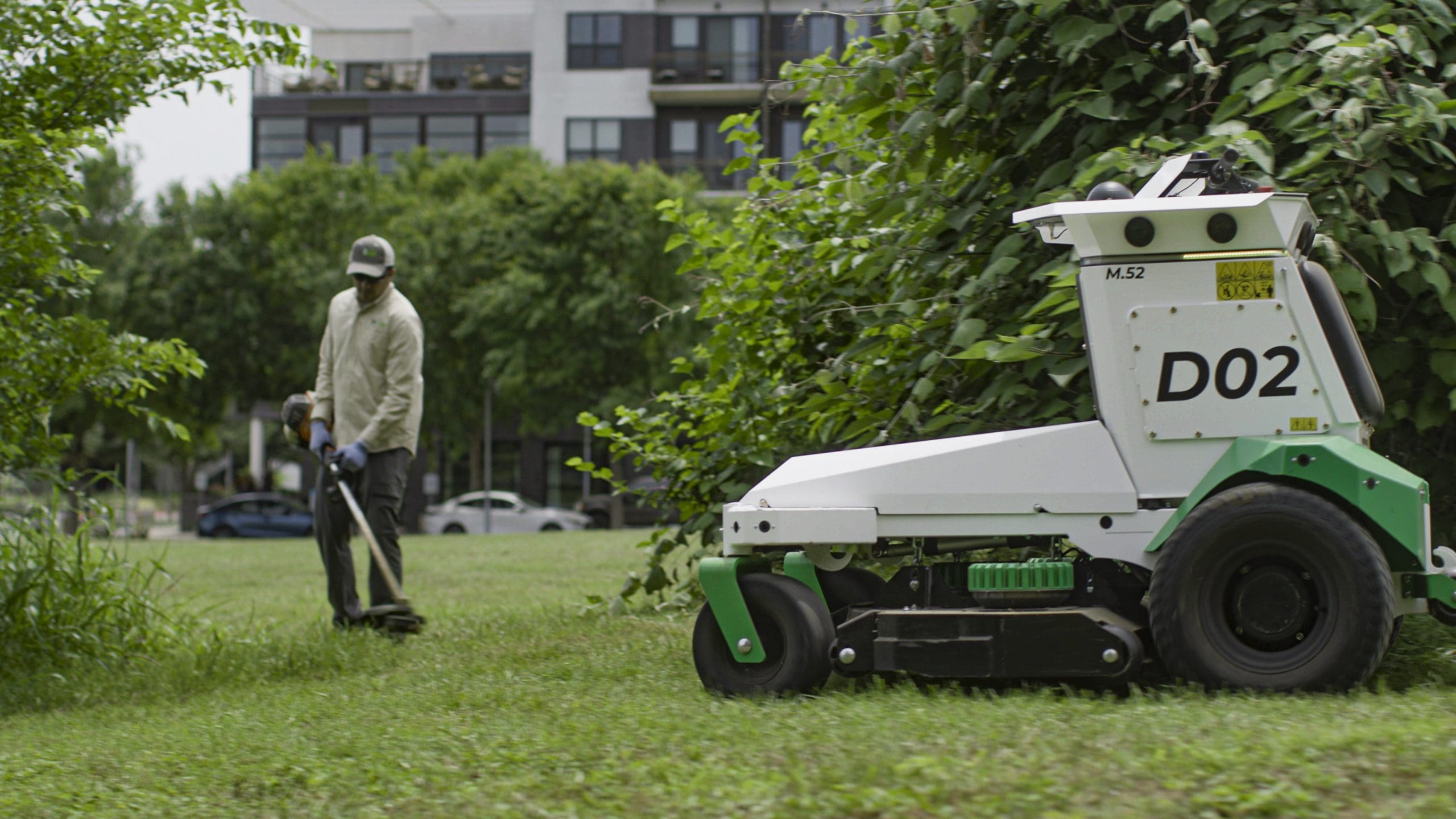
One of the reasons commercial autonomous mowers haven’t become widespread with landscape maintenance companies is the question of how to integrate them properly into existing operations.
Depending on your client base, commercial autonomous mowers may be a great fit for the properties you maintain.
Where They Function Best
Because each commercial autonomous mower brand has a different approach to the technology that drives their machines, this can impact what sites they work the best on.
“It’s anywhere that our landscapers have a repetitive job and a crew that they want to increase productivity with,” says Charles Brian Quinn, co-founder and CEO of Greenzie. “The largest labor savings come in areas that are more open, so not a lot of trees. Not a lot of obstacles.”
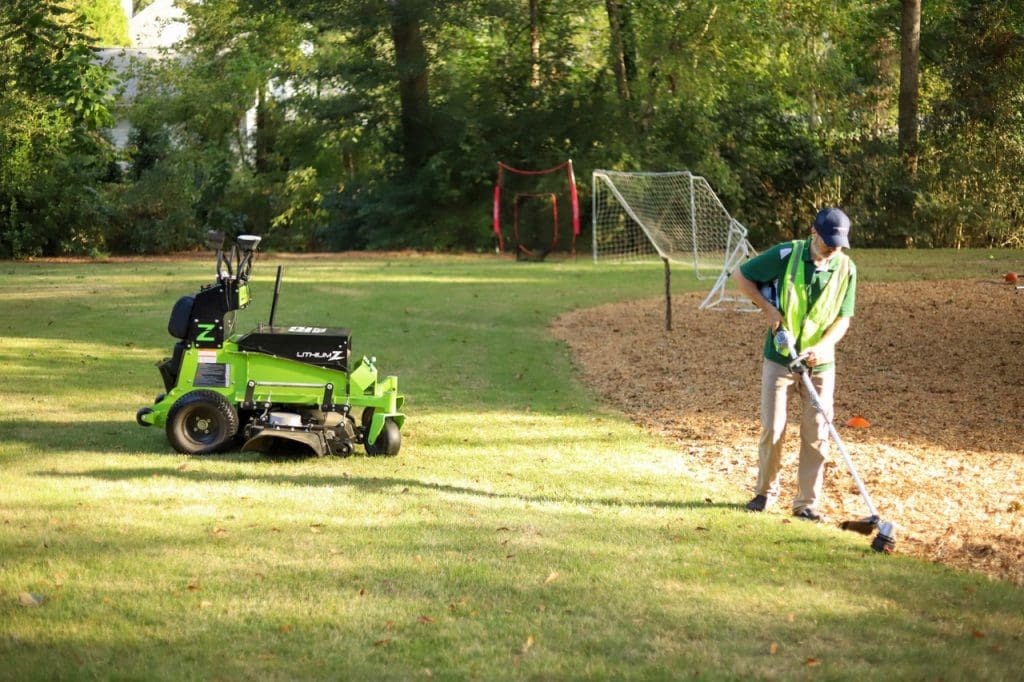
Quinn says that Greenzie mowers can navigate less open spaces, but they are slower and humans are still better at determining the smartest path around obstacles.
“A lot of companies are utilizing these mowers on crews that have the smaller mowers with them and they’ll let the big mower do the big open areas and then tag team it with another mower,” Quinn says.
Billy Otteman, director of marketing for Scythe, agrees that autonomous mowers perform the best in open spaces like large parks, as areas with lots of trees and people can be more challenging. The Scythe mower can currently handle up to 15-degree slopes. Otteman says they’ll have to design the machinery differently to tackle extremely steep slopes, but it is something in the pipeline that they are working on.
“Autonomy is a great solution because we can take a crewman out of that danger and have the machine mowing for them, but then also the speed and accuracy that robots can get to in an environment like that,” Otteman says.
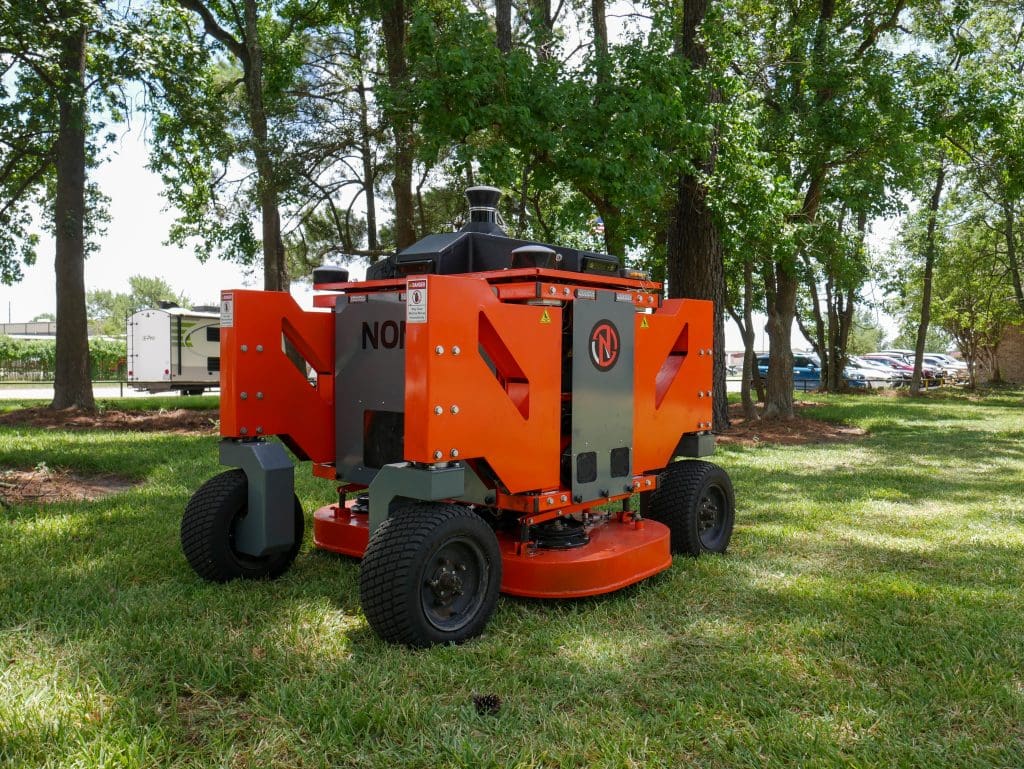
Zapt’s mower Nomad has a custom, fully integrated sensor suite to navigate when GNSS is unavailable, such as when it is mowing under trees, near fences, and next to tall buildings or walls.
“This integrated sensor suite on Nomad also allows it to mow in suboptimal weather conditions such as sleet, rain, fog, and dust, along with working under trees right up to the edge of all areas,” says Keith Vickery, president of Zupt, LLC, the parent company of Zapt. “A prospective client recently evaluated our unit and suggested that it will double the number of projects they could deploy autonomous mowers because of this LiDAR positioning capability. So many commercial projects are not large open fields – but areas under trees and alongside tall buildings and fences.”
ECHO’s TurfMower series utilizes guidewires to outline the desired working area and geo-defined zones to create working areas and no-go zones within the wired area. Benjamin Houssa, vice president of robotics for ECHO, Inc., says they have seen success maintaining university grounds, driving ranges, corporate campuses and sports fields.
Husqvarna’s CEORA is suited for golf courses and baseball fields to other public spaces as it uses wire-free satellite-based technology to determine its boundaries.
“Evaluating the site and determining the correct mower for the automower application is the first thing someone should consider,” says Jason Connor, director of commercial robotics for Husqvarna. “This includes making a decision regarding a boundary wire solution or our EPOS boundary wire-free solution. It is also very important to consider the availability of electricity and the placement of the charging station.”
Typical Operation Setups
ECHO and Husqvarna’s mowers are designed to be installed and live on-site.
“The robot follows a working schedule and will autonomously go and charge whenever the battery needs to be charged,” Houssa says. “The work to charge ratio goes from 2:1 to 1:1 depending on the technology (random vs pattern) and the site.”
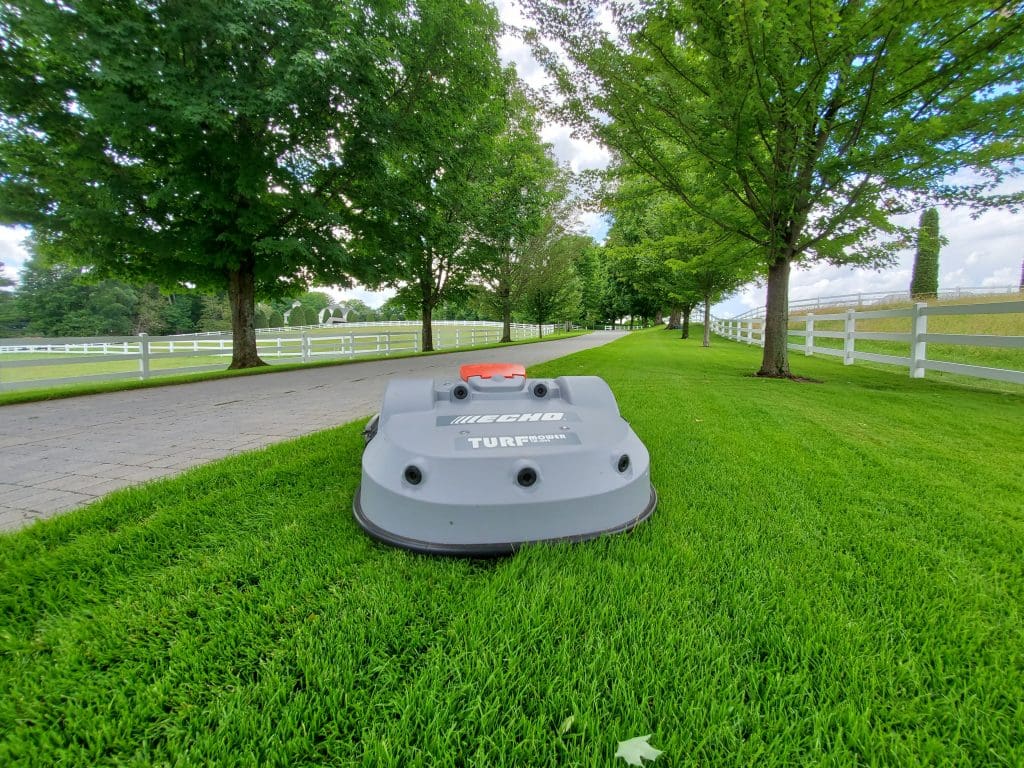
Houssa explains that this daily mowing is beneficial for the grass as it reduces the stress on the turf by only removing a few millimeters at a time. He adds that landscapers can visit these sites with a smaller crew, lighter truck and without a trailer.
Meanwhile, Greenzie and Scythe mowers can be taken from site to site and deployed with an existing crew. Quinn says that their end users are able to scale down their crew sizes from three to two by adding a Greenzie mower.
Crew members will handle tasks like weeding, enhancements or mowing on other parts of the property. He says in one case a crew was able to get so far ahead they had no mowing to do on a Friday and went to help other crews get their work done.
“You’re almost increasing the entire productivity of the entire branch at that point by just having one crew have an autonomous mower or two on one of the crews,” Quinn says.
Otteman says with Scythe mowers, they’ve seen landscape companies either send a crew with two to three autonomous mowers to do the mowing while the team members work on other tasks or they will have a dedicated robot crew that mows and a maintenance crew will follow up later on.
“So far, we’ve seen the greatest increase in productivity is when you have that crewman/robot collaboration, and you’re able to take care of other stuff on site while the robot is taking care of the mowing,” Otteman says.
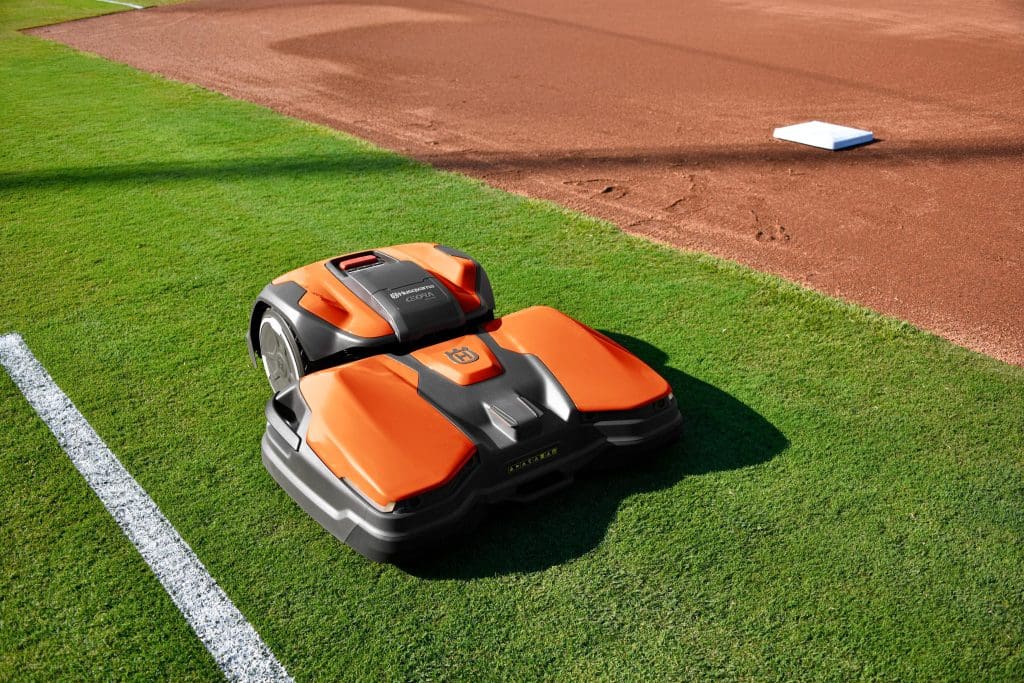
Both Quinn and Otteman say the utilization of commercial autonomous mowers has provided productivity gains that allow the mowing crews to not feel so rushed and have better work-life balance.
Vickery says they have seen a variety of different operation setups work with the Nomad mower. They have had some cases where the mower replaces a traditional zero-turn on a trailer and acts as part of the crew to having one individual managing the operation of up to five Nomad mowers nearby.
“Nomad provides high productivity, whether utilized as a part of a conventional manned team or in a purely autonomous team,” Vickery says. “Therefore, as long as the mowing site has been mapped, Nomad can be brought to each site on a trailer with the crew by loading Nomad manually through remote control, or Nomad can be programmed to work from a ‘garage’ space being permanently deployed to a single job/permanent location.”

